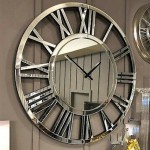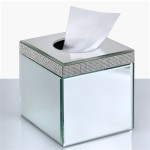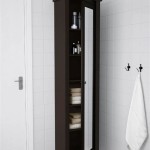The Enduring Appeal of Mirrors with Beveled Edges
Mirrors have transitioned from mere reflective surfaces to integrated design elements within both residential and commercial spaces. Among the vast array of mirror styles available, mirrors with beveled edges maintain a distinctive presence, offering a blend of classic aesthetics and subtle sophistication. The beveled edge, a decorative treatment applied to the perimeter of the mirror, contributes significantly to its overall visual appeal and perceived value.
This article delves into the characteristics, manufacturing process, diverse applications, and practical considerations associated with mirrors featuring beveled edges. It aims to provide a comprehensive understanding of this popular mirror style and its continuing relevance in contemporary design.
Understanding the Beveled Edge
The distinguishing feature of a beveled mirror is the angled edge that surrounds the reflective surface. This angled edge, typically ranging from 0.5 inches to 1.5 inches in width, adds depth and dimension to the mirror. The bevel is created by grinding and polishing the glass at a specific angle, resulting in a sloping surface that refracts light. This refraction creates a subtle, shimmering effect that enhances the mirror's visual appeal.
The primary function of the bevel is decorative. It transforms a simple, flat piece of glass into a more ornate and visually engaging object. The beveled edge introduces a sense of refinement and craftsmanship. Furthermore, the bevel helps to soften the overall appearance of the mirror, preventing it from appearing too stark or severe, especially in minimalist design schemes.
The width and angle of the bevel can vary, influencing the overall aesthetic. Wider bevels create a more dramatic effect, while narrower bevels offer a more subtle enhancement. The choice of bevel width is often determined by the size of the mirror and the desired level of ornamentation.
The Manufacturing Process of Beveled Mirrors
The creation of a beveled mirror is a multi-step process requiring specialized equipment and skilled craftsmanship. The process begins with the selection of high-quality float glass, which serves as the foundation for the mirror. Float glass is known for its flatness and clarity, essential characteristics for achieving a clear and distortion-free reflection.
The glass is then cut to the desired size and shape. Once cut, the edges of the glass are ground down to eliminate any sharp or uneven areas. This initial grinding prepares the edges for the beveling process. The next stage involves using specialized beveling machines that grind and polish the edge of the glass at a precise angle.
These machines utilize a series of grinding wheels, each with progressively finer abrasive grit. The first wheels remove larger amounts of glass to create the initial bevel angle, while subsequent wheels refine and polish the surface to achieve a smooth, flawless finish. The angle and width of the bevel are carefully controlled throughout this process to ensure consistency and accuracy.
Following the beveling process, the glass undergoes a thorough cleaning to remove any residual grinding compounds or debris. The final step involves applying a reflective coating to the back of the glass. This coating, typically composed of silver or aluminum, is protected by a layer of paint, which prevents corrosion and scratching. The silvering or aluminum coating is what transforms the glass into a functional mirror.
Quality control is paramount throughout the entire manufacturing process. Regular inspections are conducted to ensure that the bevel is uniform, the reflective surface is free of defects, and the mirror meets the required standards for clarity and durability. Minor imperfections can detract from the overall aesthetic and functionality of the mirror; therefore, rigorous quality checks are put in place.
Applications in Interior Design
Mirrors with beveled edges find applications across a broad spectrum of interior design styles and spaces. Their versatility stems from their ability to complement both traditional and contemporary aesthetics. In traditional settings, a beveled mirror can enhance the elegance and sophistication of a room. They are often incorporated into ornate frames and used as decorative accents in living rooms, dining rooms, and bedrooms.
In more modern designs, beveled mirrors can provide a subtle touch of texture and visual interest without overpowering the clean lines and minimalist aesthetic. They can be used as accent pieces in bathrooms, hallways, and entryways. The reflective quality of the mirror, combined with the shimmering effect of the beveled edge, helps to brighten and expand the perceived size of a room.
Beveled mirrors are also frequently used in furniture design. They can be incorporated into dresser tops, side tables, and console tables, adding a touch of glamour and sophistication to these pieces. In bathrooms, beveled mirrors are a particularly popular choice for vanities and medicine cabinets. Their water resistance and ease of cleaning make them a practical and stylish option for this environment.
Large, wall-mounted beveled mirrors can serve as focal points in a room, creating a dramatic and visually striking effect. These mirrors can be used to reflect natural light, brighten dark corners, and enhance the sense of spaciousness. They are particularly effective in smaller rooms where maximizing light and visual space is crucial.
The placement of the lights plays a vital role in enhancing the beauty of a beveled mirror. When arranged in a way that highlight its beveled edges, the light dances and twinkles, adding further character and depth to the mirror. This makes it a welcome addition to areas where there is sufficient lighting or where you want to create an ambient atmosphere.
Practical Considerations and Maintenance
When selecting a beveled mirror, several practical considerations should be taken into account. The size and shape of the mirror should be appropriate for the space in which it will be installed. Larger mirrors are ideal for creating a sense of spaciousness, while smaller mirrors can be used as decorative accents.
The width of the bevel should also be considered. Wider bevels create a more dramatic effect but may not be suitable for smaller mirrors or minimalist designs. The frame, if present, should complement the style of the mirror and the overall décor of the room. Frames can range from simple and understated to ornate and highly decorative. The thickness of the mirror also matters for structural integrity, especially for larger pieces. Thicker glass is less prone to warping or breakage.
Installation is another important consideration. Larger beveled mirrors can be heavy and require professional installation to ensure that they are securely mounted. Improper installation can result in damage to the mirror or the surrounding wall. The type of wall also matters because different wall surfaces require different kinds of mounting hardware.
Maintaining a beveled mirror is relatively straightforward. Regular cleaning with a soft cloth and a glass cleaner is sufficient to keep the reflective surface free of smudges and fingerprints. Harsh chemicals or abrasive cleaners should be avoided, as they can damage the reflective coating or the beveled edge. It is also important to protect the mirror from excessive moisture and extreme temperatures, which can cause the reflective coating to deteriorate over time.
For mirrors that are framed, the frame should also be cleaned and maintained according to the manufacturer's instructions. Wooden frames may require occasional polishing to prevent them from drying out or cracking. Metal frames may need to be cleaned with a specialized metal cleaner to prevent tarnishing or corrosion.
The Timeless Allure of the Beveled Edge
The enduring popularity of mirrors with beveled edges is a testament to their timeless appeal and versatility. The beveled edge adds a touch of elegance and sophistication to any space, making it a welcome addition to both traditional and contemporary designs. Whether used as a functional mirror in a bathroom or as a decorative accent in a living room, a beveled mirror can enhance the visual appeal of any room.
The manufacturing process of beveled mirrors involves a combination of skilled craftsmanship and advanced technology. The result is a high-quality product that is both beautiful and durable. With proper care and maintenance, a beveled mirror can last for many years, providing a lasting source of beauty and functionality.
As interior design trends continue to evolve, the beveled mirror remains a classic and sophisticated choice. Its ability to enhance light, create a sense of spaciousness, and add a touch of elegance ensures its continued relevance in the world of interior design.

Bevel Edge Mirror Diffe Sizes Melbourne Bathroom

Bevelled Edge Mirrors Glass Brisbane Pty Ltd

Bevel Edge Wall Mirror 120x75cm Bathroom Mirrors Perth

Budget Bevel Edge Bathroom Mirror Range Luxe Mirrors

Bevel Edge Mirror 1200 X 900 Bathrooms On A Budget

Better Bevel 18 In W X 40 H Single Frameless Rectangular Beveled Edge Mirror 17158 The Home Depot

Buy Bevel Edge Mirror 1200x800 In Helmex

Large Flat Framed Wall Mirror With Double Edge Beveled F Hamilton Hills

Mirrors With Bevel Edge Area Glass Co Home Auto Commercial

Square 30 X Beveled Glass Edge Modern Frameless Wall Mirror P1424 Lamps Plus








